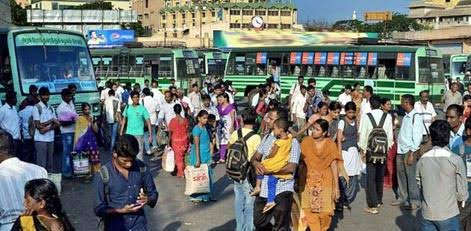On celebration of World Environment Day Land Pollution
Posted on: 07/Jun/2018 11:55:45 AM

What is Land Pollution?
Land Pollution has come to become one of the serious concerns that we collectively battle.
Land pollution, in other words, means degradation or destruction of earth�s surface and soil, directly or indirectly as a result of human activities.
Anthropogenic activities are conducted citing development, and the same affects the land drastically, we witness land pollution; by drastic we are referring to any activity that lessens the quality and/or productivity of the land as an ideal place for agriculture, forestation, construction etc.
The degradation of land that could be used constructively in other words is land pollution.Land Pollution has led to a series of issues that we have come to realize in recent times, after decades of neglect.
The increasing numbers of barren land plots and the decreasing numbers of forest cover is at an alarming ratio. Moreover the extension of cities and towns due to increasing population is leading to further exploitation of the land. Land fills and reclamations are being planned and executed to meet the increased demand of lands.
Causes of Land Pollution
Below are the sources of land pollution:
1. Deforestation and soil erosion:
Deforestation carried out to create dry lands is one of the major concerns.
Land that is once converted into a dry or barren land, can never be made fertile again, whatever the magnitude of measures to redeem it are. Land conversion, meaning the alteration or modification of the original properties of the land to make it use-worthy for a specific purpose is another major cause.
2. Agricultural activities:
With growing human population, demand for food has increased considerably. Farmers often use highly toxic fertilizers and pesticides to get rid off insects, fungi and bacteria from their crops. However with the overuse of these chemicals, they result in contamination and poisoning of soil.
3. Mining activities:
During extraction and mining activities, several land spaces are created beneath the surface. We constant hear about land caving in; this is nothing but nature�s way of filling the spaces left out after mining or extraction activity.
4. Overcrowded landfills:
Each household produces tonnes of garbage each year. Garbage like aluminium, plastic, paper, cloth, wood is collected and sent to the local recycling unit. Items that cannot be recycled become a part of the landfills that hampers the beauty of the city and cause land pollution.
5. Industrialization:
Due to increase in demand for food, shelter and house, more goods are produced. This resulted in creation of more waste that needs to be disposed of. To meet the demand of the growing population, more industries were developed which led to deforestation. Research and development paved the way for modern fertilizers and chemicals that were highly toxic and led to soil contamination.
6. Construction activities:
Due to urbanization, large amount of construction activities are taking place which has resulted in large waste articles like wood, metal, bricks, plastic that can be seen by naked eyes outside any building or office which is under construction.
7. Nuclear waste:
Nuclear plants can produce huge amount of energy through nuclear fission and fusion. The left over radioactive material contains harmful and toxic chemicals that can affect human health. They are dumped beneath the earth to avoid any casualty.
8. Sewage treatment:
Large amount of solid waste is leftover once the sewage has been treated. The leftover material is sent to landfill site which end up in polluting the environment.
Effects of Land Pollution
Soil pollution:
Soil pollution is another form of land pollution, where the upper layer of the soil is damaged. This is caused by the overuse of chemical fertilizers, soil erosion caused by running water and other pest control measures; this leads to loss of fertile land for agriculture, forest cover, fodder patches for grazing etc.
Change in climate patterns:
The effects of land pollution are very hazardous and can lead to the loss of ecosystems. When land is polluted, it directly or indirectly affects the climate patterns.
Environmental Impact:
When deforestation is committed, the tree cover is compromised on. This leads to a steep imbalance in the rain cycle.
A disturbed rain cycle affects a lot of factors. To begin with, the green cover is reduced. Trees and plants help balance the atmosphere, without them we are subjected to various concerns like Global Warming, the green house effect, irregular rainfall and flash floods among other imbalances.
4. Effect on human health: The land when contaminated with toxic chemicals and pesticides lead to problem of skin cancer and human respiratory system. The toxic chemicals can reach our body through foods and vegetables that we eat as they are grown in polluted soil.
Solutions for Land Pollution
- Make people aware about the concept of Reduce, Recycle and Reuse.
- Reduce the use of pesticides and fertilizers in agricultural activities.
- Avoid buying packages items as they will lead to garbage and end up in landfill site.
- Ensure that you do not litter on the ground and do proper disposal of garbage.
- Buy biodegradable products.
- Do Organic Gardening and eat organic food that will be grown without the use of pesticides.
- Create dumping ground away from residential areas.
- Several creatures survive under the land too. Disrupting the harmony of the land, is disrupting their habitat
- We walk and survive on land. It is literally the base of our ecosystem. It is in our good interest to take care of it and nurture it.







